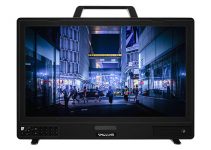These days there are literally countless ways to manipulate Raw footage using the already available post-production software solutions that are constantly getting better and more user-friendly oriented with every new version. For instance, you can replace different parts of your frame, remove unwanted artifacts, color grade your footage so that you can totally change the overall look and mood of your scene and all of that can be achieved only by utilising some simple post-production techniques.
Here is an example. In the following video tutorial, Clinton Jones from RocketJump Film School showcases how to add realistic camera shake to a certain clip in After Effects. Probably you may ask why would you need to add shake rather than removing it from your videos. Well, the answer is simple. Sometimes you can easily liven up a still image or simply add more dynamics to your static shots or just play around for fun and see what you can get. So, without further ado let’s jump in.
The whole concept of this trick is to use the camera shake from another footage, track the clip, extract the moving data and then apply it to your still image or static shot. First you need to open your footage with the camera shake in a new AE composition and access the Motion Tracking tab as shown in the video above. Depending on the kind of tracking data you want to extract you can track the camera movement using its position, rotation and scale by toggling Track Motion.
The second step of the process is to find the most suitable tracking points. A quick tip – the further your tracking points are placed from each other, the better final results you will get. Furthermore, when you are setting up the tracking points you should look for areas with high contrast, thus, the platform algorithms can better track and calculate more precisely the camera movement itself.
Hit track forward and let After Effects Tracker do its job. Alternatively, you can track the clip manually by utilising the Page Up and Page Down buttons on your keyboard. If you tracking slips at some point you can easily fix this manually by tracking it frame by frame. Don’t worry too much if the tracking is off a little bit as this won’t impact too much your final results.
After the tracking has finished you need to create a new Null Object in your composition by hitting Ctrl-Alt-Shift-Y. In the Motion Tracking Tab go to Edit Target… and select the Null Object you’ve just created. Hit OK, and then Apply. Now you have a Null Object with all the tracking data collected from this clip.
Copy and paste the Null Object into the composition with the still image or static shot you want to apply this tracking data to. Finally, you simply need to pair both layers and you are ready to go.
Furthermore, you can fiddle with the tracking points if you want to by selecting the position, rotation and scale keyframes of the Null Object and fine tune them manually. You can also add some motion blur to make the artificial camera movement more natural and pleasant to the eye. There you go! Now you know how to add camera shake to your footage.
[source: RocketJump Film School]
Disclaimer: As an Amazon Associate partner and participant in B&H and Adorama Affiliate programmes, we earn a small comission from each purchase made through the affiliate links listed above at no additional cost to you.
Claim your copy of DAVINCI RESOLVE - SIMPLIFIED COURSE with 50% off! Get Instant Access!




